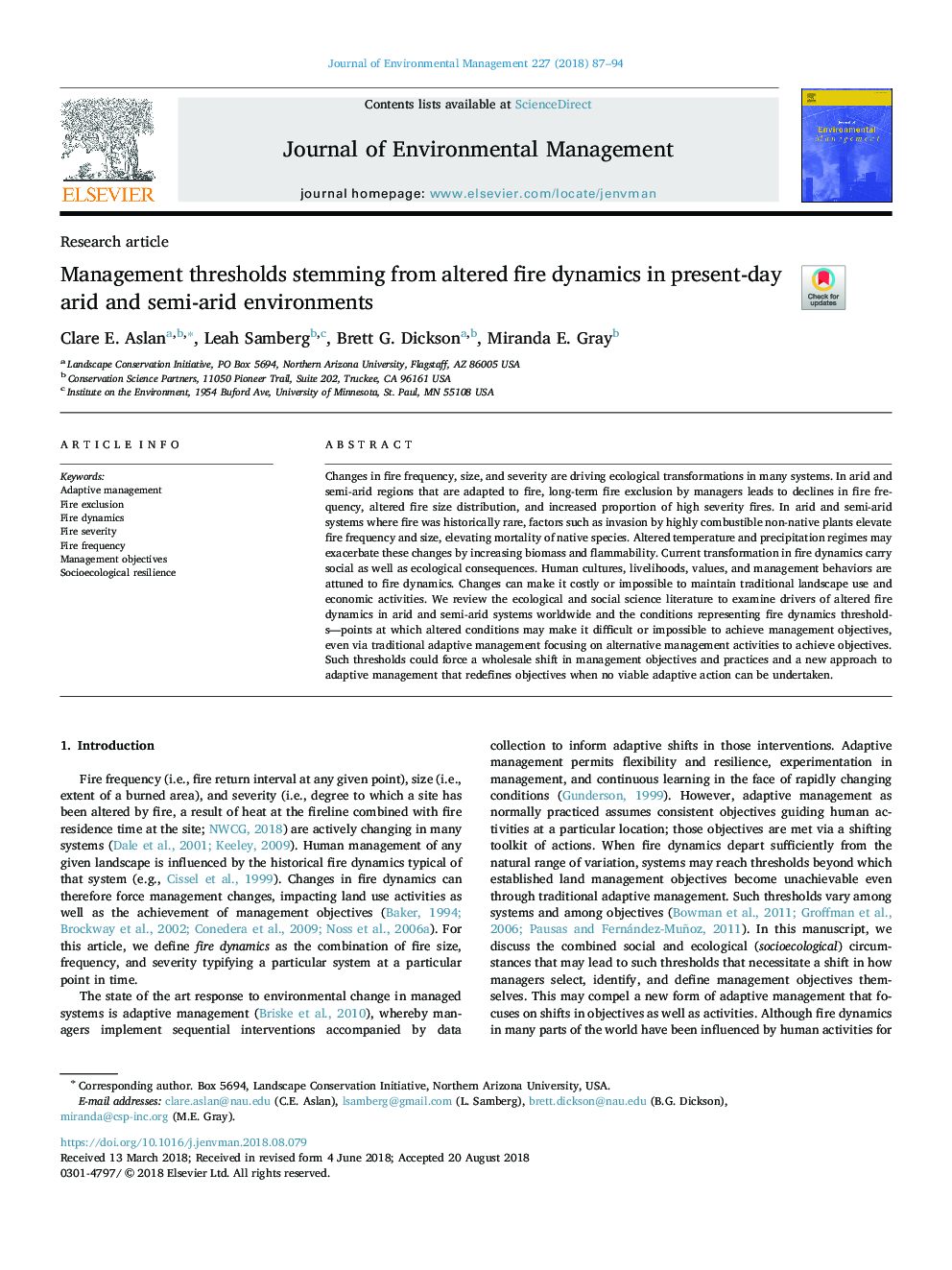| Article ID | Journal | Published Year | Pages | File Type |
|---|---|---|---|---|
| 8954716 | Journal of Environmental Management | 2018 | 8 Pages |
Abstract
Changes in fire frequency, size, and severity are driving ecological transformations in many systems. In arid and semi-arid regions that are adapted to fire, long-term fire exclusion by managers leads to declines in fire frequency, altered fire size distribution, and increased proportion of high severity fires. In arid and semi-arid systems where fire was historically rare, factors such as invasion by highly combustible non-native plants elevate fire frequency and size, elevating mortality of native species. Altered temperature and precipitation regimes may exacerbate these changes by increasing biomass and flammability. Current transformation in fire dynamics carry social as well as ecological consequences. Human cultures, livelihoods, values, and management behaviors are attuned to fire dynamics. Changes can make it costly or impossible to maintain traditional landscape use and economic activities. We review the ecological and social science literature to examine drivers of altered fire dynamics in arid and semi-arid systems worldwide and the conditions representing fire dynamics thresholds-points at which altered conditions may make it difficult or impossible to achieve management objectives, even via traditional adaptive management focusing on alternative management activities to achieve objectives. Such thresholds could force a wholesale shift in management objectives and practices and a new approach to adaptive management that redefines objectives when no viable adaptive action can be undertaken.
Keywords
Related Topics
Physical Sciences and Engineering
Energy
Renewable Energy, Sustainability and the Environment
Authors
Clare E. Aslan, Leah Samberg, Brett G. Dickson, Miranda E. Gray,
